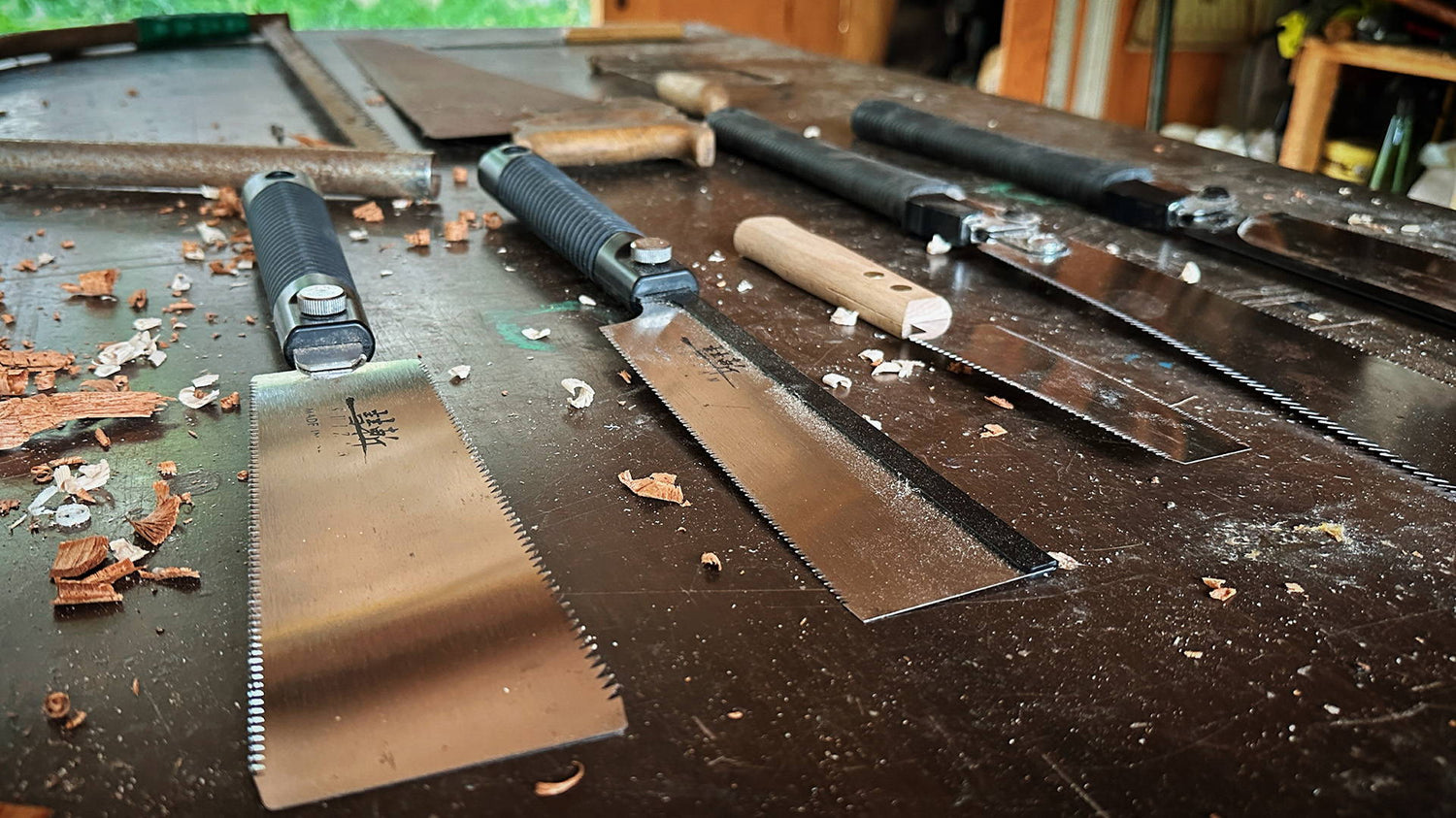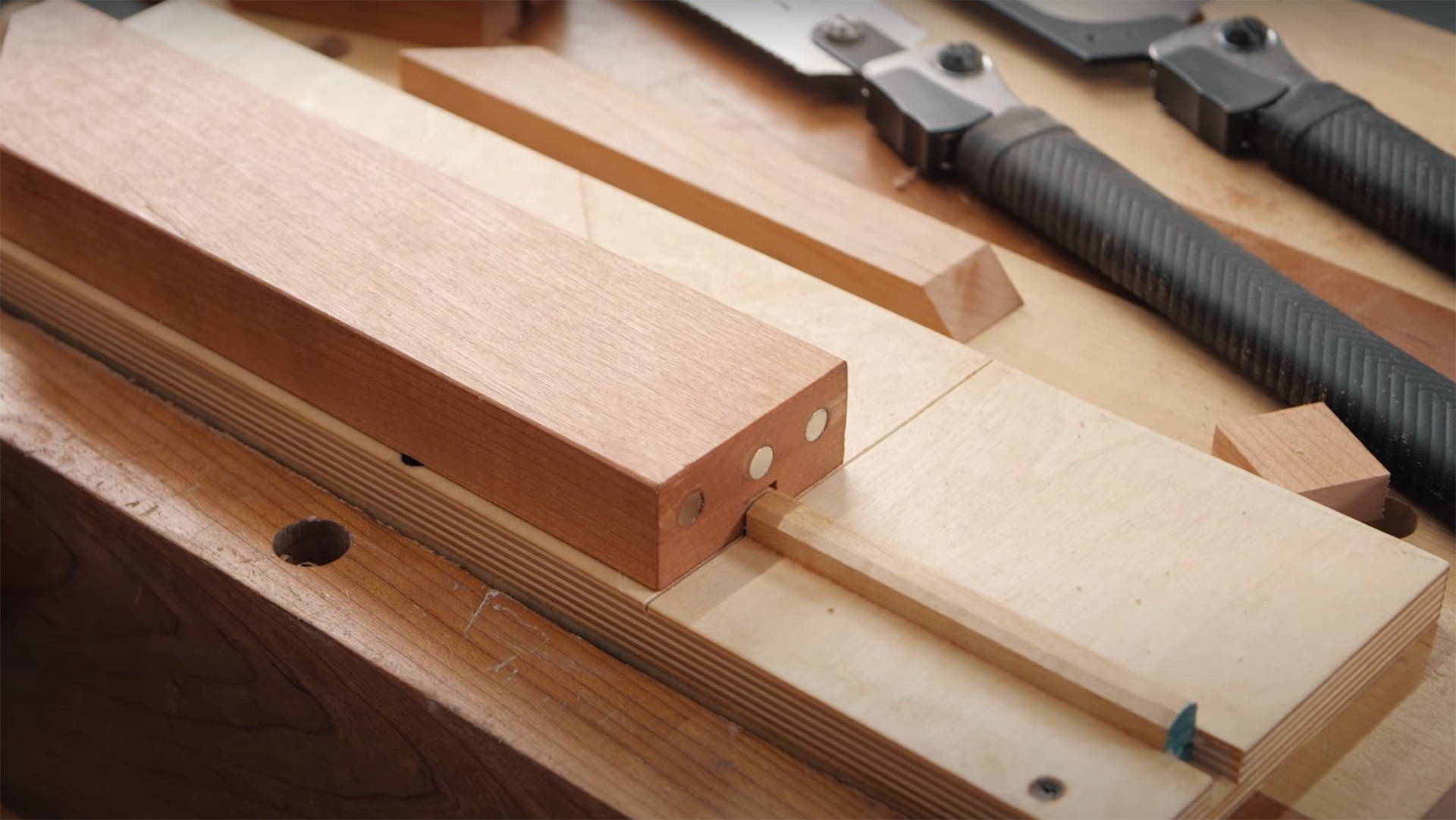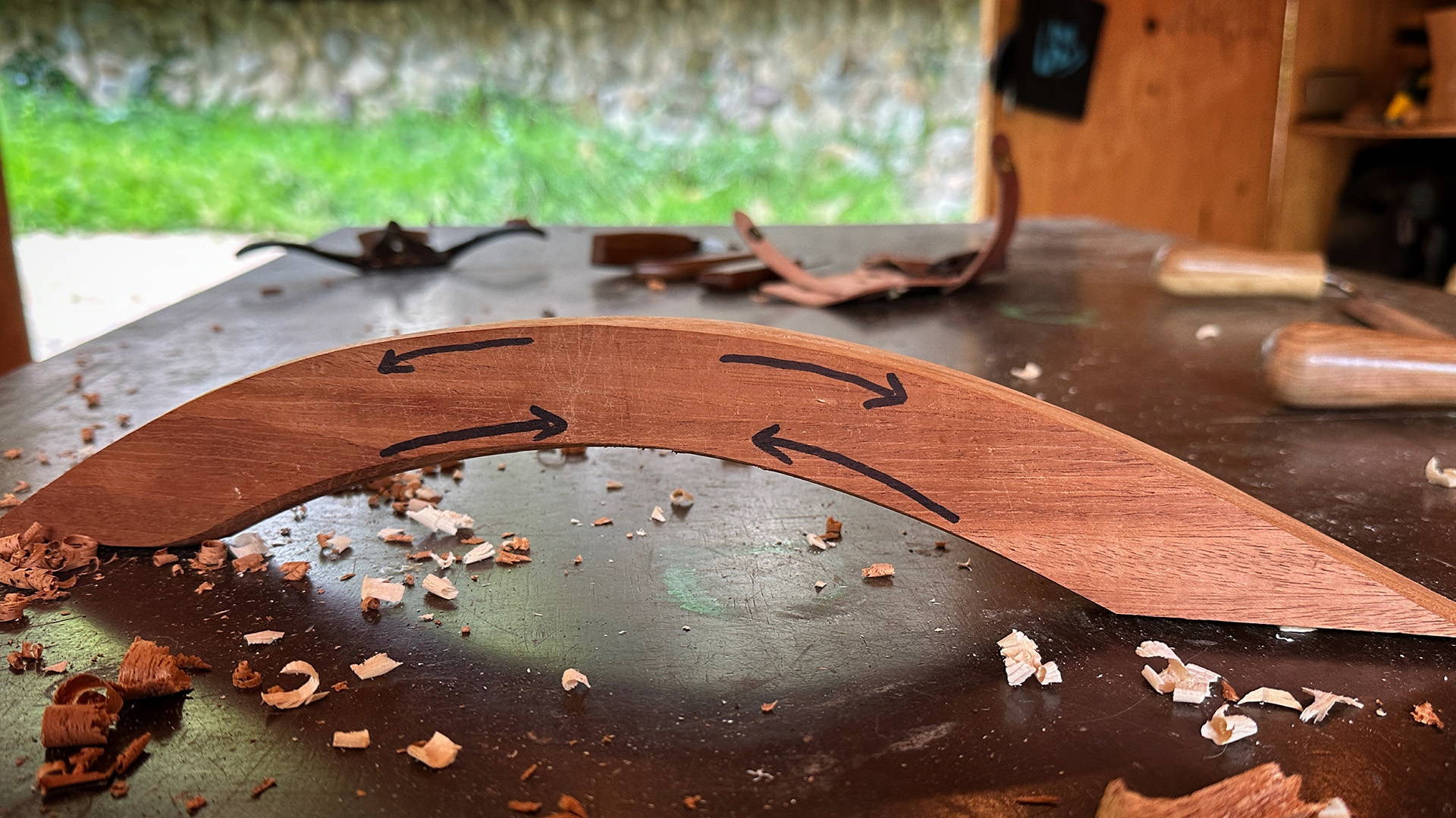If you've ever felt overwhelmed by the variety of hand saws out there, you're not alone.
How can there be so many different styles... when all they need to do is cut wood?
But the truth is, each type of hand saw is a specialist in its field — designed for a specific type of cut.
From tenoning saws to dovetail saws, Western push saws to Japanese pull saws, each has a job to do.
Today, I'm walking you through the hand saws commonly used for woodworking — exploring their characteristics, uses, and what you actually need.
After reading this guide, you'll be ready to select the perfect saw for your next project.
A FEW HAND SAW TERMS
Before we get into the specific types of saws, let's take a look at some definitions you need to know to understand their differences.
TEETH PER INCH (TPI) AND TOOTH SIZE
The cutting capability of a hand saw largely depends on two things: the number of teeth per inch (TPI) and the size of the teeth.
Generally, the higher the TPI and smaller the teeth, the smoother but slower the cut. Less TPI and larger teeth are geared for aggressive, fast cuts, which aren't usually as clean.
Paired with this are the size of the gullets, which are the spaces between the teeth. Bigger gullets are better at carrying out more sawdust — part of the reason bigger teeth equal fast cuts.
TPI also affects how easy it is to start a cut with a hand saw. High TPI saws are easy to start, while low TPI saws are trickier with more tendency to jump around initially.
TOOTH SET
Tooth set refers to how the teeth bend away from the body of a hand saw, alternating from side to side.
The purpose of tooth set is to create a kerf, or cutting path, that is wider than the thickness of the saw blade itself. This prevents the saw from binding in a board as you're cutting.
A wider set results in a thicker kerf, often less precise but quicker to cut. It's ideal for rough cuts where speed is more important than accuracy.
Narrower tooth sets produce a thinner and finer kerf, making it the preferred choice for detailed work where accuracy is key — like cutting joinery.
Tooth set also affects the "cleanness" of the cut. Wider sets tend to leave a rougher finish, while narrower sets result in cleaner edges.
RAKE ANGLE
Rake angle is the angle of a tooth's cutting face, and it's all about how aggressively a hand saw cuts.
Saws with a rake angle closer to or above 0° (teeth that are vertical or lean forward) are more aggressive. They cut fast, but are harder to start and can feel like they're grabbing the wood.
Saws with a lower or negative rake angle (teeth that lean away from the cut) yield a slower cut but are a lot easier to start.
RIPPING SAWS VS CROSSCUT SAWS
Most hand saws fall into the category of either ripping or crosscut saws — which tells you exactly how they're meant to be used.
Ripping saws have fewer, larger teeth and are used for cutting along the grain of the wood (rip cuts). They often have a more aggressive rake angle for faster cutting.
Crosscut saws have more, smaller teeth designed for cutting across the grain. They typically have less rake, producing a slower cut that severs wood fibers more cleanly.
But these aren't hard and fast rules. I'll often begin rip cuts with a crosscut saw since they're easier to start accurately, then switch to a ripping saw once the kerf's established.
And for fine joinery, I typically use hand saws with crosscut characteristics to get finer, more accurate cuts — even though I might technically be ripping.
Want an all in one saw? The double-sided Japanese Ryobas we carry feature both crosscut and ripping teeth.
WESTERN PUSH SAWS VS JAPANESE PULL SAWS
The fundamental difference between Western and Japanese hand saws is the direction in which they cut.
Western saws cut on the "push" stroke, while Japanese saws cut on the "pull" stroke. This affects both the performance and design of the tools.
Western push saws have a thicker blade to withstand the stress of the push stroke, ensuring they don't buckle under pressure when pushing through the wood.
They can take a bit of effort, but their advantage is that any tearout or sawdust will be on the opposite side you're facing — making it easy to follow your layout lines.
Japanese pull saws have thinner, lighter blades that cut as you pull them towards you. The pulling action naturally keeps the blade taut, allowing it to be thinner without the risk of buckling (read more about Japanese saws here).
I find that pull saws produce smoother, more precise cuts with less effort. That's why they're my favorite for intricate joinery and fine detailed work. The downside is you often have to blow away sawdust to keep an eye on your line.
That said, neither type is inherently better than the other.
The choice between Western push saws and Japanese pull saws depends mostly on personal preference — and there are world-class woodworkers on both sides of the divide.
BACKSAWS VS REGULAR HAND SAWS
Regular hand saws and backsaws are two broad categories of saws you'll also come across.
Regular hand saws, also known as panel saws, have long blades without a reinforced top edge.
These are the wobbly ones that let you make cuts of any length. They're great for long rips and crosscuts when you're dimensioning lumber.
Backsaws are distinguished by a stiffened rib on their top edge (usually plastic or metal) that keeps the saw rigid during use.
The added rigidity allows for more precision and control, but the rib also limits how deep you can cut. These are ideal for joinery work where accuracy is critical.
Within the backsaw category, you'll find tenoning saws and dovetail saws (though they sometimes go by different names).
Tenoning saws are backsaws designed for small rip cuts — like cutting the cheeks of tenons.
Dovetail saws are the more crosscutty version of backsaws. They have a lot of small teeth and are meant for super fine work.
Personally, I like using dovetail saws for tenon work. It cuts slower than a dedicated tenon saw, but that can be an advantage when you're after ultra accuracy.
FLUSH TRIM SAWS
Flush trim saws have a flexible blade that allows you to bend them flat anywhere on a surface.
They typically have zero tooth set so you can cut right against a board face without scratching it, and are ideal for flush-cutting plugs and proud joinery.
Some have more or fewer teeth depending on whether they're intended to cut hard or softwoods. We carry a double-sided flush trim saw that has both.
COPING SAWS AND FRET SAWS
Coping saws are fret saws are pretty similar, but do have some small differences.
Both have thin blades held taut in a U-shaped frame and are used for cutting curves and complex shapes. The blades can be switched out for different TPIs depending on the cut and material.
A coping saw is my go-to tool for removing waste between dovetail joints. The thin blade fits in the kerf from my dovetail saw and lets me make a curved cut close to the layout lines.
Fret saws resemble coping saws in their overall shape but tend to have a longer, deeper frame and finer blades.
This deeper frame allows for cutting further from the edge of the workpiece, making fret saws perfect for cutting intricate patterns or designs.
BOWSAW OR BUCKSAW
A bowsaw, also known as a bucksaw, is sort of like an oversized coping saw.
The blade is tensioned in the frame with a lot of space for long crosscuts or relatively long rips, and can be switched out as needed.
They're typically used for making rough cuts in logs or lumber, or for resawing wide boards.
WHAT HAND SAWS DO YOU NEED FOR WOODWORKING?
If you could only get one hand saw, I'd start with a Japanese Ryoba.
These saws have both crosscut and ripping sides, making them super versatile and amazing all-around tools (plus they're super affordable).
If Western push saws are more your jam, start with a crosscut panel saw, then a rip saw.
With either of these options, you'll be able to handle the bulk of hand sawing tasks.
When you get to a point where you want more precision and cleaner cuts, invest in some kind of backsaw (I love my Dozuki dovetail saw).
Lastly, I'd get a coping saw and a flush trim saw. Neither of these are 100% necessary, but they do make a lot of operations so much easier.
Of course, there's nothing wrong with acquiring a massive collection of hand saws — as long as you know what each one is suited for.
GET A HANDLE ON HAND SAWS
Hand saws are fundamental woodworking tools — and understanding the purpose of each kind will help you get better, faster results.
It's really not that complicated. And in time you'll know exactly what a certain type of cut calls for.
In the meantime, you can use the information above to build your collection intentionally...
But of course, there's always room for one more saw in your workshop.
Want to improve your saw technique? Here’s 5 tips to help you master your hand saws.
What’s your most used hand saw? Let us know in the comments below!
Follow us on Instagram @katzmosestools, on TikTok @katzmoseswoodworking, and check out my YouTube channel for more great woodworking content...
And as always, STAY SAFE IN THE SHOP!











3 comments
Ranjit Fernando
Thank you so much for awsome educative information given.
Thank you so much for awsome educative information given.
Stanley D. Ozereko
I’m getting older and have semi arthritic hands. I would be willing to bet that no one uses a Japanese pull saw in the traditional manner – that is sitting on the floor with the board on your knees while you pull straight up. Saying this, does anyone make Japanese pull saws with a D handle?
I’m getting older and have semi arthritic hands. I would be willing to bet that no one uses a Japanese pull saw in the traditional manner – that is sitting on the floor with the board on your knees while you pull straight up. Saying this, does anyone make Japanese pull saws with a D handle?
Mike Curtin
The last hand saw I purchased was a back saw for use in luthiery. It has a .008" kerf. Perfect for cutting the back off an instrument.
The last hand saw I purchased was a back saw for use in luthiery. It has a .008" kerf. Perfect for cutting the back off an instrument.